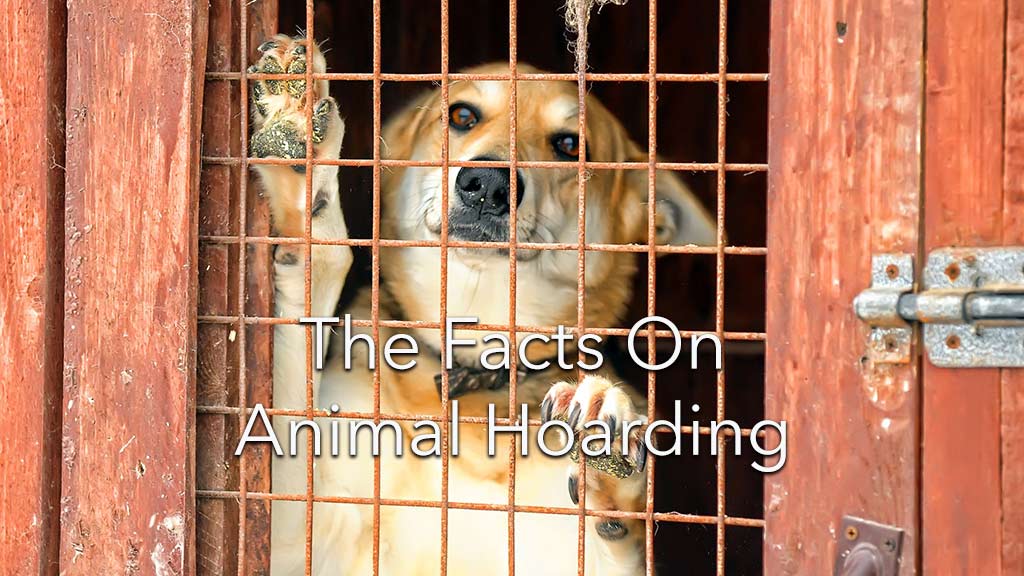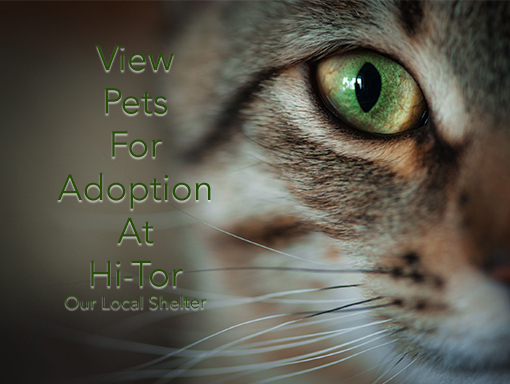
Often lampooned as ‘crazy cat ladies’, animal hoarders are no laughing matter. They are psychologically disturbed individuals whose behavior hurts the animals that they possess, their community, and themselves. Animal hoarders have a near 100% recidivism rate and cost municipalities tens of thousands of dollars per case.
What Qualifies as An Animal Hoarder?
Animal hoarders are individuals who refuse to accept that their behavior endangers their own health, the health of others that live with them, and the animals in their ‘care’. They can accumulate animals passively or actively, depending on the extent of their mental illness, and they tend to have a strong belief that only they are the ones capable of sufficiently loving and caring for the animals in their charge. Most are resistant to changing their habits, though those hoarders who passively collect animals are more likely to be responsive to reason than those who actively collect animals. Animals living with hoarders tend to be malnourished, overcrowded, sick, and psychologically affected by their overcrowded conditions. The homes in which they live are usually squalid, overrun with pests, and polluted with animal waste. It is not unheard of for the houses of animal hoarders to be condemned and demolished due to the extent of damage that the animal overcrowding creates.
Three Type of Hoarders
In a paper produced by the Hoarding of Animals Research Consortium, animal hoarders can be sorted into three categories.
Overwhelmed Caregivers
Overwhelmed Caregiver Hoarders are typically senior citizens or other adults who suffer from loneliness, physical infirmity, and/or the loss of a loved one. For these folks, animal possession begins normally enough, but slowly snowballs out of control as the individual becomes more isolated, more closely focuses on their role as caregiver to their pets, and increasingly takes in animals that they believe are in need. Overwhelmed Caregivers are usually on a fixed income or find themselves in a situation where they no longer have the money and time that they once had to manage their animal population. Of the three groups of hoarders, Overwhelmed Caregivers are most likely to be honest with animal cruelty investigators, to open their homes to inspection, and are more open to reason from outside responders.
Rescuer Hoarders
These individuals are typically driven by an ideology that all animals should be saved and that they are the most qualified person to do the job. Rescuer Hoarders actively try to acquire animals and are more likely to try to hide their hoarding habits. They can try to mask their hoarding by seeing multiple vets and being secretive about letting others into their homes. Smart and manipulative, they are resistant to reasoning and insist that their hoarding behavior is normal for them and their circumstances.
Exploiter Hoarders
The most severe of the hoarding groups, these individuals collect animals as part of a self-serving psychosis. Animals in their care can be tortured, starved and otherwise abused. Exploiter Hoarders are usually extremely manipulative and savvy about hiding their habits. They are prone to lying, stealing, and other sociologically inappropriate behaviors all as a way of keeping their hoarding habits a secret and ongoing.
Costs of Animal Hoarding
Animal hoarding costs municipalities tens-of-thousands of dollars per case with some price tags reaching $100,000.00 or more. In a typical hoarding situation, a number of civic services may be called to action including adult protective services, child protective services, code responders, policemen, firemen, animal control officers, the district attorney, the public defender, emergency medical system responders, competency evaluators, and the court system. Additionally there is the arduous and expensive task of removing animals from hoarding situations, finding them shelter, and providing them medical treatment.. Lastly animal hoarding can significantly impact the value of any real estate involved and create unsafe and unsanitary conditions for those that live in and around the dwelling in which the hoarder resides.
Society’s Ineffective Response to Animal Hoarding
A major problem with animal hoarding is society’s response to it. Almost always, animal welfare organizations are the first and only responders, but removing animals from a hoarding situation is only treating one symptom of a much bigger issue at the center of which is the hoarder’s mental illness. Animal hoarders are not cured by indictment, by efforts to clean up their homes, by news broadcasts about their actions, or by taking away their animals. Without proper psychological and medical care, hoarders have a nearly 100% rate of recidivism and eventually return to the habit of hoarding.
Effects of Hoarding On Animals
Animals housed in a hoarding environment are often ill and malnourished. Living with so many other animals leaves them perpetually anxious and a lack of food causes the animals to stress and fight. Sometimes animals rescued from hoarding situations can be saved, but many end up euthanized because there is no place to house them, because they are too ill to be treated cost effectively, or because they have severe behavioral issues that prevent them from being adopted.
Efforts in Rockland County to End Animal Hoarding and Abuse
Rockland County has a robust program to stop animal hoarding and to address it properly. In 2011 Rockland County unanimously approved an animal cruelty registry, the second of its kind in the entire United States. The registry, hosted by the Sheriff’s Department, lists the names and faces of all convicted animal abusers for four years after their offense. The Hudson Valley Humane Society responds to an average of 20 animal abuse cases per month and takes animal cruelty, abuse and hoarding very seriously. Staffed with NY State certified Peace Officers, the organization retains the right to decide if cases should be tried civilly or criminally. In the organization’s words:
“There is a high statistical correlation between cruelty and abuse of animals, and, cruelty and abuse of humans. All known serial killers enjoyed abusing animals as children. We do not regard children injuring or abusing animals as harmless “pranks”. Our agents take this message to schools, government agencies, police departments and civic organizations.”
What To Do If You Suspect Animal Hoarding
The ASPCA provides these guidelines when identifying an animal hoarder:
- An individual possesses more than the typical number of companion animals.
- The individual is unable to provide even minimal standards of nutrition,sanitation, shelter and veterinary care, with this neglect often resulting in starvation, illness and death.
- The individual is in denial of the inability to provide this minimum care and the impact of that failure on the animals, the household and human occupants of the dwelling
Additionally the ASPCA cites that animal hoarders:
- Have numerous animals and may not know the total number of animals in their care.
- Their home is deteriorated (i.e., dirty windows, broken furniture, holes in wall and floor, extreme clutter).
- There is a strong smell of ammonia, and floors may be covered with dried feces, urine, vomit, etc.
- Animals are emaciated, lethargic and not well socialized.
- Fleas and vermin are present.
- Individual is isolated from community and appears to be in neglect himself.
- Individual insists all animals are happy and healthy—even when there are clear signs of distress and illness.
Here’s what the ASPCA website says you should do if you suspect an animal hoarding case:
- Call your local humane law enforcement department, police department, or animal welfare organization.
- Contact social service groups. Your local department of the aging, adult protective services, health departments and other mental health agencies may be able to provide services or links to services.
- Reassure the animal hoarder that it’s okay to accept help. Animal hoarders are usually worried that their animals will be killed or that they will never see them again. Regardless of the outcome, assure them that the animals need urgent care and that immediate action is necessary.
- Volunteer your time. With the removal of so many animals from a hoarding situation, the burden on local shelters can be staggering. Volunteer your time to help clean cages, socialize animals, walk dogs and perform other such necessary duties.
- Keep in touch. It may be appropriate for animals to be spayed and neutered and returned to their home if an animal hoarder can provide—or can be aided in providing—care. Under the guidance of an organization, help the individual with daily animal care chores. And if the individual acquires new animals, help ensure that they are spayed/neutered and vaccinated.





